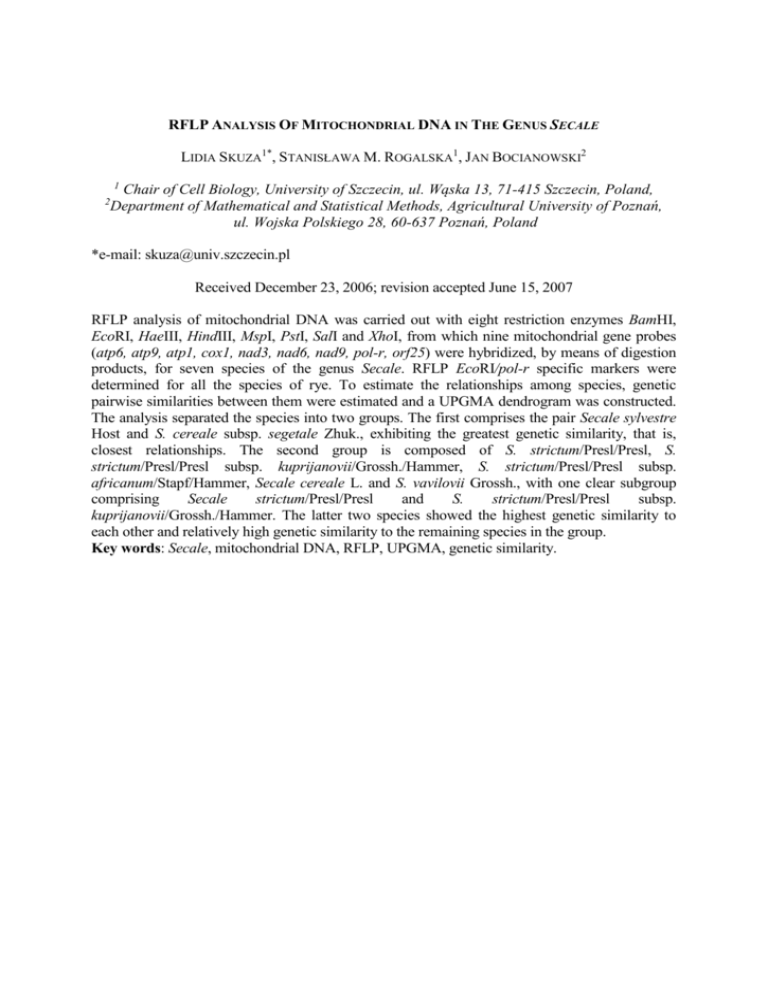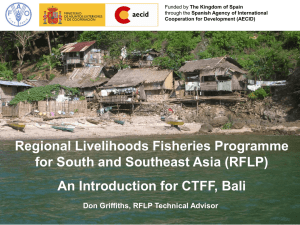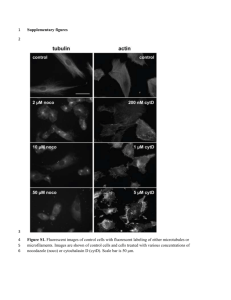rflp analysis of mitochondrial dna in the genus secale
advertisement

RFLP ANALYSIS OF MITOCHONDRIAL DNA IN THE GENUS SECALE LIDIA SKUZA1*, STANISŁAWA M. ROGALSKA1, JAN BOCIANOWSKI2 Chair of Cell Biology, University of Szczecin, ul. Wąska 13, 71-415 Szczecin, Poland, Department of Mathematical and Statistical Methods, Agricultural University of Poznań, ul. Wojska Polskiego 28, 60-637 Poznań, Poland 1 2 *e-mail: skuza@univ.szczecin.pl Received December 23, 2006; revision accepted June 15, 2007 RFLP analysis of mitochondrial DNA was carried out with eight restriction enzymes BamHI, EcoRI, HaeIII, HindIII, MspI, PstI, SalI and XhoI, from which nine mitochondrial gene probes (atp6, atp9, atp1, cox1, nad3, nad6, nad9, pol-r, orf25) were hybridized, by means of digestion products, for seven species of the genus Secale. RFLP EcoRI/pol-r specific markers were determined for all the species of rye. To estimate the relationships among species, genetic pairwise similarities between them were estimated and a UPGMA dendrogram was constructed. The analysis separated the species into two groups. The first comprises the pair Secale sylvestre Host and S. cereale subsp. segetale Zhuk., exhibiting the greatest genetic similarity, that is, closest relationships. The second group is composed of S. strictum/Presl/Presl, S. strictum/Presl/Presl subsp. kuprijanovii/Grossh./Hammer, S. strictum/Presl/Presl subsp. africanum/Stapf/Hammer, Secale cereale L. and S. vavilovii Grossh., with one clear subgroup comprising Secale strictum/Presl/Presl and S. strictum/Presl/Presl subsp. kuprijanovii/Grossh./Hammer. The latter two species showed the highest genetic similarity to each other and relatively high genetic similarity to the remaining species in the group. Key words: Secale, mitochondrial DNA, RFLP, UPGMA, genetic similarity.







